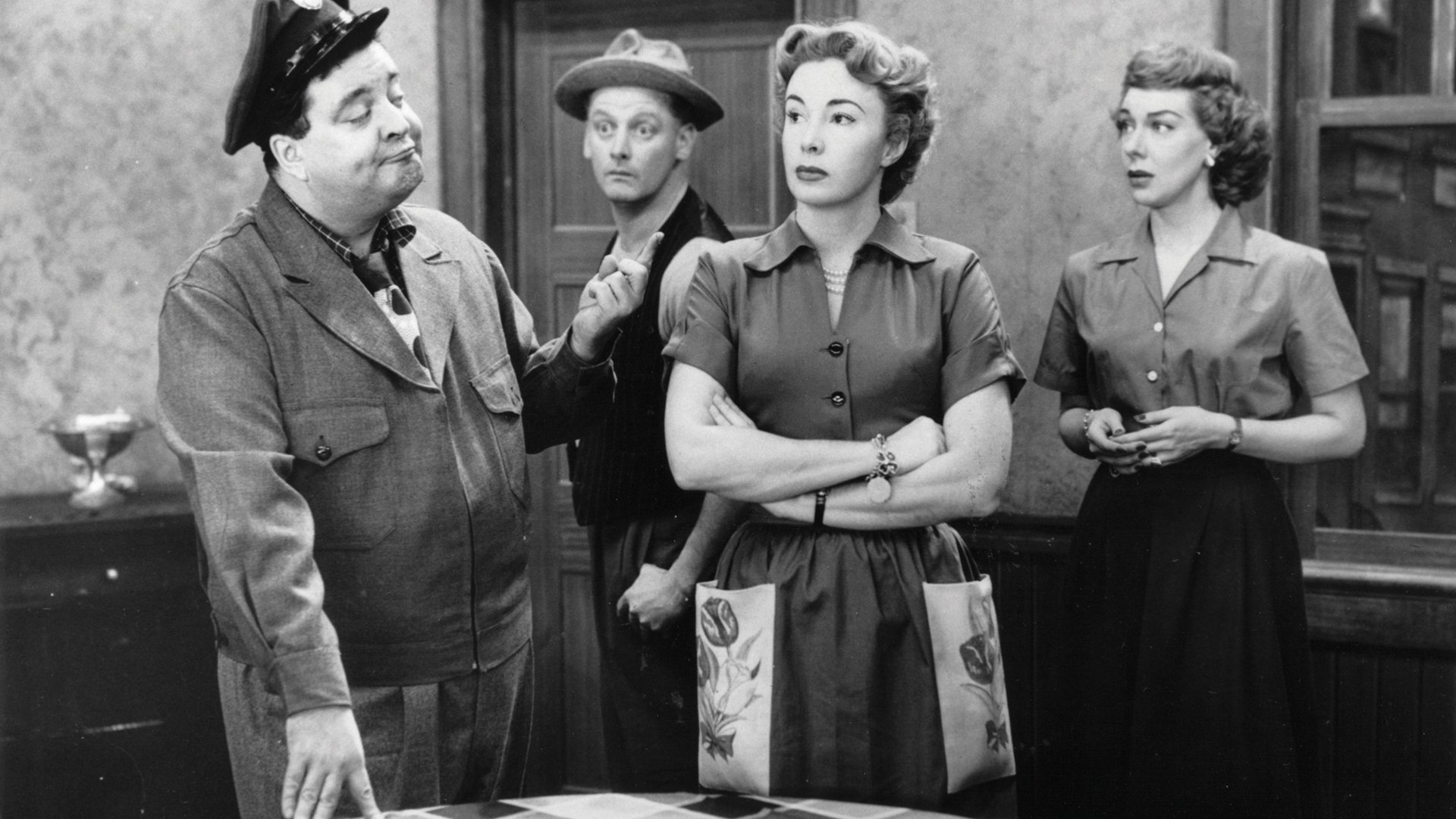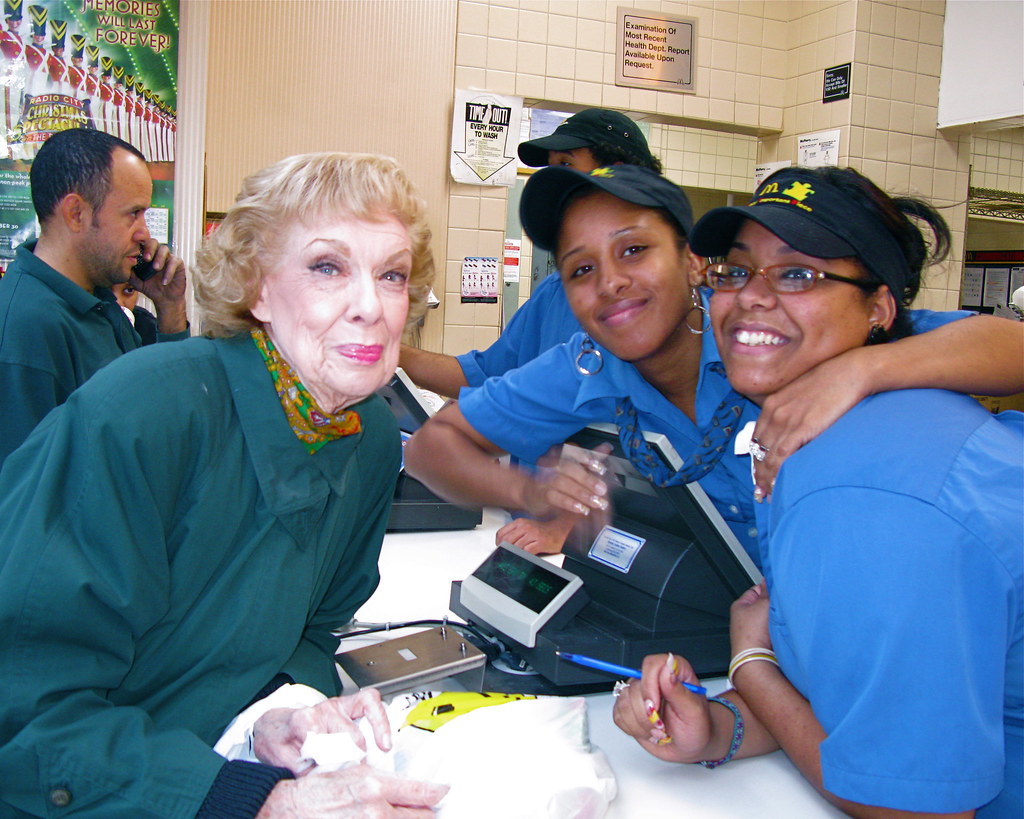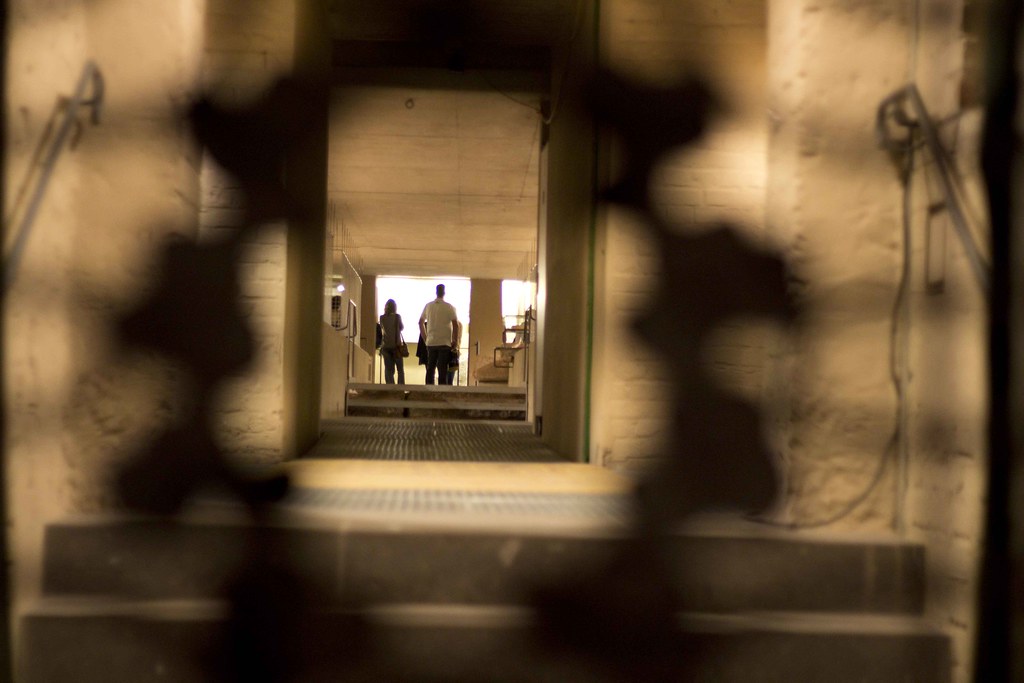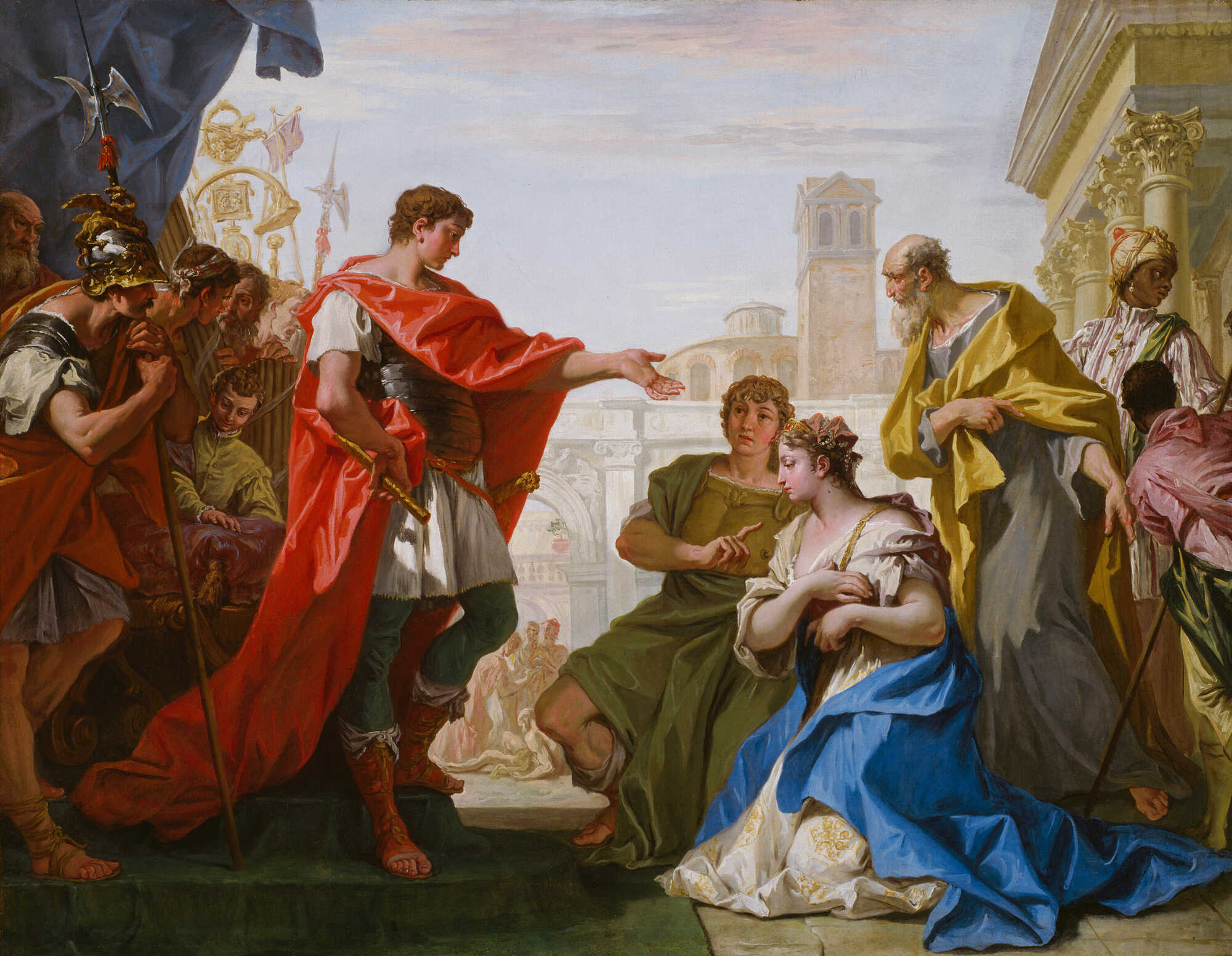
The television landscape of the 1950s was defined by pioneering creativity and the forging of cultural touchstones, none perhaps more beloved and enduring than “The Honeymooners.” This seminal sitcom, a vivid window into the humble, often humorous struggles of working-class life in Brooklyn, captivated millions and established a comedic blueprint that continues to resonate today. At its heart were four iconic characters whose interactions, replete with boisterous arguments and heartfelt reconciliations, etched themselves indelibly into the fabric of American entertainment, creating a show revered decades after its initial run.
Among this legendary quartet was Joyce Randolph, who brought to life the character of Trixie Norton, the ever-patient and discerning wife to the rubber-limbed sewer worker Ed Norton. Her recent passing at the advanced age of 99 marks a poignant closure to an extraordinary chapter in television history, as she was the last surviving member of the show’s original main cast. Her departure not only prompts a reflective journey through her significant life and pivotal role but also underscores the enduring influence of a show that defined an entire generation of television comedy and continues to be discovered by new audiences.
This article embarks on an in-depth exploration of the remarkable life and distinguished career of Joyce Randolph, examining her journey from the theatrical stages of Detroit to the bright, demanding lights of live New York television. We will meticulously detail her indispensable contribution to the comedic alchemy of “The Honeymooners,” unraveling the unique, almost improvisational, production environment that fostered its genius. Furthermore, we will illuminate the indelible mark she left on the hearts of countless viewers, ensuring her legacy as a treasured and historically significant figure in the annals of broadcast entertainment.

1. **The Final Farewell to Trixie Norton: Joyce Randolph’s Passing at 99**The world of classic American television recently marked a profound and poignant moment with the death of Joyce Randolph, a beloved actress whose iconic portrayal of Trixie Norton cemented her place in broadcasting history. Ms. Randolph passed away peacefully on Saturday, January 13, at her Manhattan residence, just shy of her centenary, at the remarkable age of 99. Her son, Randolph Charles, confirmed her death, officially signaling the quiet closure of an era for one of television’s most iconic and enduring ensembles.
Ms. Randolph held a unique and deeply cherished position as the last surviving principal cast member of “The Honeymooners,” the groundbreaking sitcom that first captivated audiences in the 1950s. Her esteemed contemporaries, including the incomparable Jackie Gleason, who immortalized the character of the blustering bus driver Ralph Kramden, Audrey Meadows, who delivered sharp wit as Ralph’s wife Alice, and Art Carney, who embodied the cheerful and eccentric sewer worker Ed Norton, had all passed on years prior. Her impressive longevity meant she served as a living, direct link to the golden age of live television, offering a rare and invaluable perspective on the creation of a true cultural phenomenon.
Her death not only serves as a moment of solemn remembrance for her personal contributions to the arts but also as a broader reflection on the pioneering spirit and foundational creativity of early television. With Ms. Randolph’s departure, the immediate, living connection to the original, much-adored cast of “The Honeymooners” has now ceased. This fact renders her legacy as a performer and a historical figure all the more profound and significant, inviting deeper appreciation for her role in shaping comedic television. Audiences and fervent aficionados alike will undoubtedly continue to cherish her memory and the timeless, laughter-filled performances she helped to create, ensuring Trixie Norton’s place in the collective memory.

2. **Trixie Norton: The Enduring Charm of a Savvy Sitcom Wife**Joyce Randolph’s character, Trixie Norton, was an absolutely integral part of “The Honeymooners” ensemble, offering a nuanced and grounded portrayal that provided a crucial, often subtle, balance to the show’s boisterous comedic dynamic. As the wife of the “guffawing, rubber-limbed sewer worker” Ed Norton, Trixie adeptly navigated the eccentricities and well-meaning foolishness of her husband, alongside the ambitious, though invariably ill-fated, schemes concocted by their downstairs neighbor, Ralph Kramden. Her role, while perhaps deemed “less developed than the others” in terms of explicit solo storylines, was undeniably indispensable in reflecting the authentic realities of tenement life and the strong, resilient bonds that formed between the women of the era.
Trixie was frequently depicted with her arms crossed, a posture emblematic of her pragmatic and often exasperated sensibility, as she “commiserat[ed] with her best friend, Alice,” Ralph’s equally strong-willed wife, over the “addlepated husbands.” This consistent display of shared understanding and unwavering solidarity between Trixie and Alice highlighted a significant and, for its time, remarkably progressive aspect of the show, where the women often served as the clear voices of reason and practicality. Their collective, yet individually nuanced, exasperation, tempered by an underlying current of deep affection, provided a vital grounding force amidst the men’s wild escapades, creating a relatable and consistently humorous contrast that audiences adored.
Indeed, Trixie, working in seamless comedic tandem with Alice, provided the “perfect foil to her dimwitted TV husband” and the frequently hotheaded Ralph. They functioned as the unwavering anchors of their respective households, often found “commiserating over their husbands’ various follies and mishaps,” whether these involved unknowingly marketing dog food as a popular snack or trying in vain to resist an unjust rent hike, or even freezing in the winter as their heat was abruptly shut off. This enduring dynamic showcased a notable departure from typical 1950s portrayals of overtly submissive wives. Pop culture scholar Robert Thompson articulated this distinction, noting that “‘Alice and Trixie were two powerful characters played in very progressive ways by Audrey Meadows and Joyce Randolph and are not subtle in telling us who the buffoons are and who the bosses are.’” He further emphasized that “‘The Honeymooners’ was fully conscious of the fact that the two wives were in charge, keeping their idiot husbands from doing idiot things,’” a concept that was, as Thompson observed, “‘pretty radical in the 1950s.’” Her subtle strength, grounded sensibility, and unwavering loyalty contributed profoundly to the show’s lasting resonance and its cult-like following.

3. **”The Honeymooners”: A Timeless Glimpse into Working-Class America**”The Honeymooners” stands as a monumental achievement in television history, celebrated not only for its groundbreaking comedy but also for its authentic and “affectionate look at Brooklyn tenement life.” The show’s foundational premise, deeply rooted in the working-class experiences of its creator, Jackie Gleason, offered audiences a raw, yet highly relatable, depiction of ordinary people striving for a better life. Central to its narrative were the Kramdens and the Nortons, two couples whose daily struggles, unfulfilled aspirations, and unexpected moments of joy resonated deeply with millions of viewers across America, becoming a mirror for their own lives.
The series indelibly introduced the world to Jackie Gleason’s blustering bus driver, Ralph Kramden, whose grand, often ludicrous, “get-rich-quick schemes” invariably led to comedic disaster. Opposite him was Audrey Meadows, delivering a performance of sharp wit and unwavering resolve as Alice, Ralph’s strong-willed wife, whose pragmatism and cutting remarks frequently punctured his inflated ambitions. Upstairs, Art Carney delivered a masterclass in physical comedy and heartfelt eccentricity as the cheerful, “rubber-limbed sewer worker” Ed Norton, perfectly complemented by Joyce Randolph’s Trixie, his discerning and ever-observant wife. These characters, particularly the Kramdens, existed in a starkly realistic world where “status symbols in a gritty Brooklyn tenement were telephones, television sets and refrigerators,” essential modern conveniences they often conspicuously lacked on Ralph’s meager “$62 a week.”
“Reflecting America’s working-class experience,” “The Honeymooners” beautifully captured the essence of shared disappointments and the profound humor found in everyday life. Whether it was Ralph’s fervent pursuit of a mythical “uranium mine in Asbury Park,” the ill-fated entrepreneurial venture into “KramMar’s Delicious Mystery Appetizer,” which famously turned out to be dog food, or the challenges of facing a looming rent hike or freezing in winter due to a lack of heat, the show consistently underscored the universal human desire for success and the inherent comedy in its frequent elusion. This authentic portrayal of domestic struggle and unvarnished ambition paved the way for future “blue-collar comedies” such as “All in the Family,” “Laverne & Shirley,” and “Roseanne.” Furthermore, the archetypes of Alice and Trixie even famously inspired the characters of Betty and Wilma on “The Flintstones,” demonstrating its profound and lasting impact on the portrayal of family life on television, securing its place as an enduring cultural artifact.
Read more about: The Global Laughter Chronicles: 12 Sitcoms That Shaped Entertainment Around the World

4. **From Detroit Stages to New York Lights: Joyce Randolph’s Early Career**The formative path that ultimately led Joyce Randolph to her iconic status as Trixie Norton on “The Honeymooners” began far from the bustling television studios of New York, originating instead in her early life within the industrial heartland of Detroit. Born Joyce Sirola on October 21, 1924, she was one of two children born to Carl and Mary Sirola. Her father, a Finnish immigrant, pursued the honest trade of a butcher, providing a modest and grounding upbringing that would unknowingly set the foundation for a distinguished career that would eventually place her on one of the most famous and beloved sets in American television history.
After completing her foundational education at Cooley High School in Detroit, the inherent ambitions and theatrical inclinations of the then-young Joyce Sirola drew her inexorably eastward. In the pivotal year of 1943, at the tender age of 19, she made the significant decision to relocate to New York City, a vibrant and magnetic hub for aspiring actors and performers seeking to make their mark. It was in this dynamic metropolis that her professional theatrical journey truly commenced, as she joined a road company production of “Stage Door,” a well-trodden and traditional route for many performers seeking to hone their craft, gain invaluable experience, and immerse themselves in the demanding professional world of acting.
Her early years in New York’s competitive theater scene were characterized by active and enthusiastic participation in various touring productions, notably including “Abie’s Irish Rose” and “Good Night, Ladies.” These varied and challenging experiences provided a crucial foundation, culminating in her highly anticipated Broadway debut in 1945, a significant and career-defining milestone for any actor. She appeared in the production of “A Goose for the Gander,” starring alongside the renowned and legendary actress Gloria Swanson. This early exposure on such a prestigious stage undeniably showcased her burgeoning talent and versatility. By this point in her burgeoning career, she was already known professionally as Joyce Randolph, having adopted the stage name that would later become universally synonymous with her most famous and cherished role.

5. **Before Trixie: Randolph’s Diverse Television Appearances**Before her image became permanently etched in the public consciousness as the discerning Trixie Norton, Joyce Randolph had already cultivated a substantial and diverse presence within the nascent and rapidly expanding medium of television during the late 1940s and early 1950s. This exhilarating period of rapid expansion in broadcasting offered numerous and varied opportunities for talented performers, and Ms. Randolph, with her inherent versatility and undeniable appeal as an actress, seized these moments, appearing alongside some of the biggest and most celebrated names in entertainment, a testament to her widespread recognition even before “The Honeymooners.”
Her pre-“Honeymooners” television credits were indeed impressive and remarkably varied, featuring memorable appearances with a constellation of luminaries. These included Eddie Cantor, a multifaceted entertainer known for his extensive work in vaudeville, radio, and film, and Danny Thomas, who would later achieve his own profound sitcom fame as the patriarch of “Make Room for Daddy.” She also shared the burgeoning television screen with the revered radio comedian Fred Allen, whose sharp wit was legendary, and even worked alongside the dynamic and wildly popular comedy duo of Dean Martin and Jerry Lewis. These diverse and challenging roles allowed her to gain invaluable experience across various comedic and dramatic formats, preparing her impeccably for the often improvisational and fast-paced environment characteristic of live television.
It was, quite remarkably, one of these seemingly ordinary early television appearances that ultimately caught the discerning and influential eye of Jackie Gleason, a pivotal moment in Ms. Randolph’s career trajectory. Specifically, it was her performance in a 1951 chewing-gum commercial where Mr. Gleason spotted her unmistakable talent and comedic timing. This chance sighting proved to be a stroke of serendipity, directly leading to him hiring her for a skit on his DuMont network variety show, “Cavalcade of Stars.” Her performance in that initial skit clearly left a profound and lasting impression, as she subsequently joined “The Honeymooners” cast, making a notable entrance by stepping into the role of Trixie after “replacing Elaine Stritch as Trixie after one performance.” This specific trajectory underscores the often serendipitous and unpredictable nature of show business and how a seemingly small, unheralded role can swiftly lead to a truly career-defining and iconic opportunity.
6. **The Unconventional Making of a Classic: Behind the Scenes of “The Honeymooners”**”The Honeymooners,” for all its iconic status and enduring popularity as a timeless classic, was remarkably produced under conditions that might strike contemporary audiences as highly unconventional and surprisingly fast-paced. The cast members, including the perceptive Joyce Randolph, held “no illusions about making television history” during its original, demanding run. This unassuming and practical approach was, in part, a direct reflection of the rapid, often improvisational nature inherent in live television production during the burgeoning 1950s, a period which often prioritized spontaneous energy and immediate audience connection over meticulous, drawn-out pre-production processes.
A particularly striking and defining aspect of the show’s unique production schedule was the remarkably limited interaction among the cast members prior to the intense demands of airtime, especially with its charismatic and commanding star, Jackie Gleason. Ms. Randolph herself vividly recalled this distinctive dynamic, stating with a clear recollection, “‘We never saw Jackie until 11 a.m. on Saturday, the morning of the show.’” This meant, quite astonishingly, that the entire ensemble had a significantly constrained amount of time to rehearse together before delivering their performances live in front of a substantial studio audience of “1,000” people. This profoundly compressed schedule was not merely a logistical constraint but a testament to the actors’ exceptional professionalism, their inherent talent, and their extraordinary ability to deliver compelling, nuanced performances under immense and immediate pressure.
Gleason’s distinctive philosophy on comedic performance played an undeniably significant role in shaping and defining this unconventional production style. “‘At lunchtime there was just one run-through with Jackie,’” Ms. Randolph lucidly explained, adding a crucial insight: “‘He said that comedy didn’t work if it was overrehearsed.’” This deeply held belief in the paramount power of fresh delivery, genuine reactions, and unadulterated spontaneity fostered a remarkably vibrant, energetic, and often unpredictable atmosphere on the set. While such a rapid, almost improvisational, method might seem counterintuitive for a show that ultimately became such a meticulously remembered and beloved classic, this unconventional approach undeniably imbued “The Honeymooners” with an authentic, raw, and spontaneous charm that remains one of its most cherished and enduring qualities, contributing significantly to its lasting cultural impact.

7. **Life Beyond the Tenement: Randolph’s Post-“Honeymooners” Choices**After five years as an integral member of Jackie Gleason’s on-the-air repertory company, culminating in the iconic “Classic 39” episodes of “The Honeymooners,” Joyce Randolph made a significant personal decision. She largely withdrew from the demanding schedule of professional acting, choosing instead to prioritize her burgeoning family life. This transition marked a deliberate shift away from the relentless pace of live television, allowing her to embrace the roles of wife and mother more fully.
Ms. Randolph often reflected on this pivotal choice with a sense of contentment and conviction. “I didn’t miss a thing by not working all the time,” she once stated, encapsulating her perspective on the trade-offs she made. Her primary motivation was deeply personal and maternal: “I didn’t want a nanny raising (my) wonderful son.” This sentiment highlighted a deeply held belief about the importance of her presence in her son’s early life, a testament to her priorities during that era.
However, the indelible imprint of Trixie Norton also presented an unforeseen challenge for her acting career. The very success that brought her widespread recognition on “The Honeymooners” inadvertently led to a form of professional pigeonholing. Directors, recognizing her ubiquitous presence as Ed Norton’s pragmatic wife, often found it difficult to envision her in other capacities.
This phenomenon of typecasting meant that despite her versatility and experience across stage and early television, future opportunities became constrained. “For years after that role, directors would say: ‘No, we can’t use her. She’s too well-known as Trixie,'” Ms. Randolph lamented in a 1993 interview with the Orlando Sentinel. Her decision to step back from consistent acting was thus partly a personal choice and partly a consequence of the powerful, yet limiting, association with her most famous character.

8. **The Financial Realities: Compensation and Royalties**While “The Honeymooners” soared to immense popularity, captivating millions and securing its place as a television classic, the financial experiences of its stars varied considerably. Joyce Randolph, despite her crucial role in the beloved quartet, was, at the peak of the show’s popularity, its lowest-salaried star. This stark reality meant that her weekly compensation of “$500” stood in considerable contrast to the earnings of her co-stars and especially the show’s creator.
For comparison, Jackie Gleason, the driving force behind the series, commanded contracts that paid millions, though he also bore the full burden of production costs, reportedly taking “$65,000 to $70,000 an episode.” Art Carney, who masterfully portrayed Ed Norton, received “$3,500” weekly, and Audrey Meadows, as the sharp-witted Alice, earned “$2,000” each week. This significant disparity underscores the complex financial landscape of early television, where star power and production control heavily influenced remuneration.
Perhaps one of the most surprising aspects of “The Honeymooners'” financial legacy for its cast members was the initial absence of compensation for its most celebrated run. Ms. Randolph notably received “no compensation in residuals for those 39 episodes” that constitute the revered “Classic 39” syndicated widely across the country and beyond. This lack of ongoing payment for reruns, which would become a standard industry practice in later decades, meant that while the show continuously delighted new generations, its original performers did not directly benefit financially from its sustained popularity during that period.
A significant shift occurred, however, with the eventual discovery and packaging of what became known as the “lost episodes,” stemming from “The Jackie Gleason Show” variety hours. It was through these previously un-syndicated segments that Ms. Randolph “finally began getting royalties.” This development provided a belated, yet welcome, stream of income, acknowledging her continued contribution to the show’s extended canon and highlighting the evolving understanding of intellectual property and performer rights in the burgeoning television industry.

9. **A Legacy of Admiration: Public Connection and Recognition**Decades after “The Honeymooners” concluded its initial run, Joyce Randolph continued to receive an outpouring of public admiration, a testament to the enduring affection audiences held for Trixie Norton and the show itself. Even into her later years, Ms. Randolph found herself the recipient of “dozens of letters a week,” tangible expressions of gratitude and recognition from fans young and old. This consistent fan engagement highlighted how deeply embedded Trixie had become in the collective consciousness of American television viewers.
Her connection with the public was not confined to correspondence; she maintained a visible and cherished presence in New York City. Ms. Randolph was a regular well into her 80s at “the downstairs bar at Sardi’s,” the famed Manhattan restaurant where caricatures of “The Honeymooners” cast prominently hang above the bar. There, she would “sip her favorite White Cadillac concoction — Dewar’s and milk — and chat with patrons who recognized her” from the iconic portrait, graciously engaging with those who sought to share their appreciation.
The true scale of the show’s impact, and her personal fame, gradually dawned on her, often through unexpected encounters. In an interview with The San Antonio Express in 2000, Ms. Randolph recounted a poignant anecdote involving her son. “One year while (my son) was in college at Yale, he came home and said, ‘Did you know that guys and girls come up to me and ask, ‘Is your mom really Trixie?'” she recalled, adding, “I guess he hadn’t paid much attention before then.” This moment crystallized for her the profound and generational reach of her most famous role.
Her enduring appeal was further underscored by a particularly memorable event in 2006 when she received a standing ovation at a U.S.O. gala in New York. Reacting with characteristic humility and charm, she commented, “I guess all those young Marines watch television.” Such moments underscored her status not merely as an actress from a bygone era, but as a living link to a beloved piece of American cultural history, perpetually cherished by a diverse and devoted fanbase.
Read more about: From Antique Rolexes to Limited-Edition Watches: Ryan Reynolds’ Luxurious Assortment of Timeless Timepieces

10. **Marriage, Motherhood, and a “First Lady” Role**In 1955, amidst the burgeoning popularity of “The Honeymooners,” Joyce Randolph embarked on a new chapter in her personal life, marrying Richard Charles. Her husband was described as a “wealthy marketing executive” and “businessman,” whose career provided a stable foundation, allowing Ms. Randolph the flexibility to step away from the rigors of full-time acting and focus on her family. This union marked a significant turning point, contributing to her decision to largely retire from show business after her pivotal role as Trixie Norton.
Richard Charles was a prominent figure in New York’s social and theatrical circles, serving with distinction as “president at the Lambs,” a revered theatrical club in Manhattan. During his tenure, Joyce Randolph naturally assumed the informal, yet cherished, title of “first lady” of the club. This role allowed her to remain connected to the performing arts community she loved, albeit in a different capacity, attending Broadway openings, fundraisers, and various social functions within this esteemed establishment.
Together, Joyce and Richard shared one son, Randolph Charles, often affectionately referred to as Randy. Her son became the central focus of her life post-“Honeymooners,” aligning with her expressed desire to personally raise him rather than rely on nannies. It was Randolph Charles who, in a poignant statement on Sunday, confirmed his mother’s death at her Manhattan residence, just a day after her passing.
The marriage between Joyce and Richard Charles endured for over four decades, a testament to their deep bond and shared life. Richard Charles passed away in 1997 at the age of 74, leaving Ms. Randolph a widow for the last two decades of her life. Despite his absence, her son Randy remained a constant presence, ensuring that the legacy of his beloved mother and her iconic role would be respectfully remembered and honored.
Read more about: Beyond the Gown: 12 Iconic Royal Fashion Statements That Spoke Volumes Through Hidden Meanings
11. **Enduring Influence: “The Honeymooners” Cultural Imprint**Beyond its initial broadcast and syndicated reruns, “The Honeymooners” carved an indelible niche in American popular culture, exerting a profound and enduring influence on subsequent generations of television comedy. Its pioneering portrayal of working-class struggles, infused with relatable humor and authentic character dynamics, established a blueprint that many later series would follow, showcasing its innovative and foundational impact on the evolving landscape of sitcoms.
The series’ honest depiction of the lives of ordinary people striving in a “gritty Brooklyn tenement” paved the way for a distinct genre of “blue-collar comedies.” Programs such as “All in the Family,” “Laverne & Shirley,” and “Roseanne” can all trace elements of their narrative and character development back to the groundbreaking work of “The Honeymooners.” This lineage underscores its role as a precursor, demonstrating how its blend of everyday frustrations and comedic resilience resonated deeply and provided inspiration for future creators seeking to reflect similar societal realities.
Its influence even extended into the realm of animation, a testament to the universality of its character archetypes. The dynamic between Ralph and Alice Kramden, and Ed and Trixie Norton, famously inspired the creation of the beloved prehistoric couples Fred and Wilma Flintstone, and Barney and Betty Rubble, in the iconic cartoon “The Flintstones.” This direct inspiration highlights how the core relationships and comedic dynamics forged in “The Honeymooners” transcended medium and setting, cementing its legendary status and pervasive cultural reach.
In a more tangible acknowledgment of its profound legacy, Joyce Randolph participated in a significant tribute to the show’s creator. In the year 2000, she dedicated an “eight-foot bronze statue of Mr. Gleason at the Port Authority Bus Terminal,” a fitting and permanent homage to the man who brought Ralph Kramden to life and spearheaded the creation of the classic sitcom. This act not only honored Jackie Gleason but also reinforced the enduring public and artistic recognition of “The Honeymooners” as a cherished cultural artifact.
12. **The Timeless Appeal and a Final Link**The phenomenon of “The Honeymooners” extended far beyond its initial broadcast run, cultivating a “cultlike following” that persists to this day. This fervent devotion is evident in the existence of “fan clubs, esoteric trivia contests and memorabilia sales,” all dedicated to celebrating the show’s unique humor and characters. Joyce Randolph’s presence, as the last surviving principal cast member, served as a tangible and cherished link to this enduring legacy, embodying the living memory of a golden era of television.
Her passing at 99 years old marks a poignant and definitive closure, as she was the “last survivor of a cast of four that dominated the Saturday night viewing habits of millions in the golden age of live television.” This fact elevates her personal story, transforming it into a significant historical marker, signifying the end of an immediate, direct connection to the original ensemble that brought such joy and laughter into American homes. Her impressive longevity made her an invaluable conduit to the past, offering a rare perspective on the creation of a cultural phenomenon.
Even as the direct, living connection to the original cast now ceases, the timeless appeal of “The Honeymooners” ensures that Trixie Norton, and Joyce Randolph’s portrayal of her, will continue to be cherished. The “laughter-filled performances she helped to create” are etched into the fabric of broadcasting history, consistently discovered and appreciated by new audiences through syndication and home video. This enduring resonance speaks to the universal themes of struggle, friendship, and domestic comedy that the show so brilliantly captured.
Indeed, Ms. Randolph’s subtle strength, grounded sensibility, and unwavering loyalty as Trixie Norton contributed profoundly to the show’s lasting resonance and its cult-like following. The series’ “affectionate look at Brooklyn tenement life” continues to reflect America’s working-class experience, offering a narrative that remains remarkably relevant. Her legacy is not just that of an actress in an iconic role, but as a guardian of a pivotal moment in comedic history, ensuring “Trixie Norton’s place in the collective memory” remains secure for generations to come.
Read more about: Julia Roberts’ Unfiltered Radiance: A Raw Look at Her Natural Glow in Unposed Moments and Her Secret True Autumn Palette
As the curtain falls on the life of Joyce Randolph, the final, radiant star from the original cast of “The Honeymooners,” we are reminded of the profound power of television to forge enduring connections and create timeless art. Her quiet strength as Trixie Norton, the ever-observant and pragmatic counterpart to the boisterous men of Brooklyn, helped ground a show that dared to depict working-class life with both humor and dignity. While we mourn the loss of this last direct link, her spirit, and the indelible laughter she helped create, will forever resonate, ensuring that “The Honeymooners” continues to charm and inspire, a permanent fixture in the hearts of those who remember and those who are just discovering its magic.





